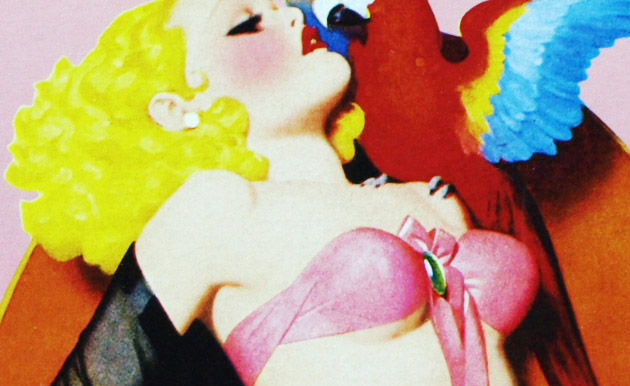Although essentially a re-formatting of previously released books, those unfamiliar with Dian Hanson’s History of Pin-Up Magazines are well served by this new edition that collects all three volumes and presents them with a flair we now come to expect from publishers TASCHEN. My initial interest in this series were the countless examples of classic pin-up art from well-known illustrators such as Enoch Bolles, but there’s also plenty here for fans of lowbrow, pulp publishing. The narrative is always entertaining and offers insight into the birth of pin-ups, the predictable conservative outrage and the bizarre if not comical health advice from so-called authority figures designed to curb man’s desires – advice to the effect that too much masturbation robs a man of his vital ‘essence’ (which comes in limited supply from birth) and will result in castrating and feminising effects! Be warned!
Any poking fun at such figures and their rather sweaty obsession with our private lives is fine by me, and Dian puts each eager censor in their proper context as new magazines push the boundaries a little further and figure out ways by bypass the censorship laws – such as with the ‘art’ or ‘artist study’ brand of nude magazines. Looking over the 3 volumes it becomes clear the genre peaked with Hugh Hefner’s Playboy, which offered a sophisticated take on mens magazines designed to cater for a more liberal, liberated and forward thinking reader. Hard-hitting articles, impressive illustration and contemporary fiction from writers such as Ray Bradbury all blended to give us that deserved but clichéd ‘I read it for the articles dear’ phrase, and spawned its own wave of imitators such as Penthouse and Men Only.
These books offer a fascinating time capsule of the trends, politics and consumer appetites before the internet made pretty much anything you can imagine freely available. The ever-desperate and attention seeking online antics of today’s would-be celebrities make these vintage magazines appear tame in comparison, and suggest that maybe now as the mass-consumer has literally seen everything, publishers should be seeking intellectual goals as per Hefner’s original intentions with Playboy, rather than a crass exhibitionism that’s become oh so boring.
Besides the obvious eye-candy, this is a series of books that provided a thought-provoking look back at the history of pin-up magazines, with plenty of appeal for classic illustration fans and pop culture aficionados alike. Recommended.


